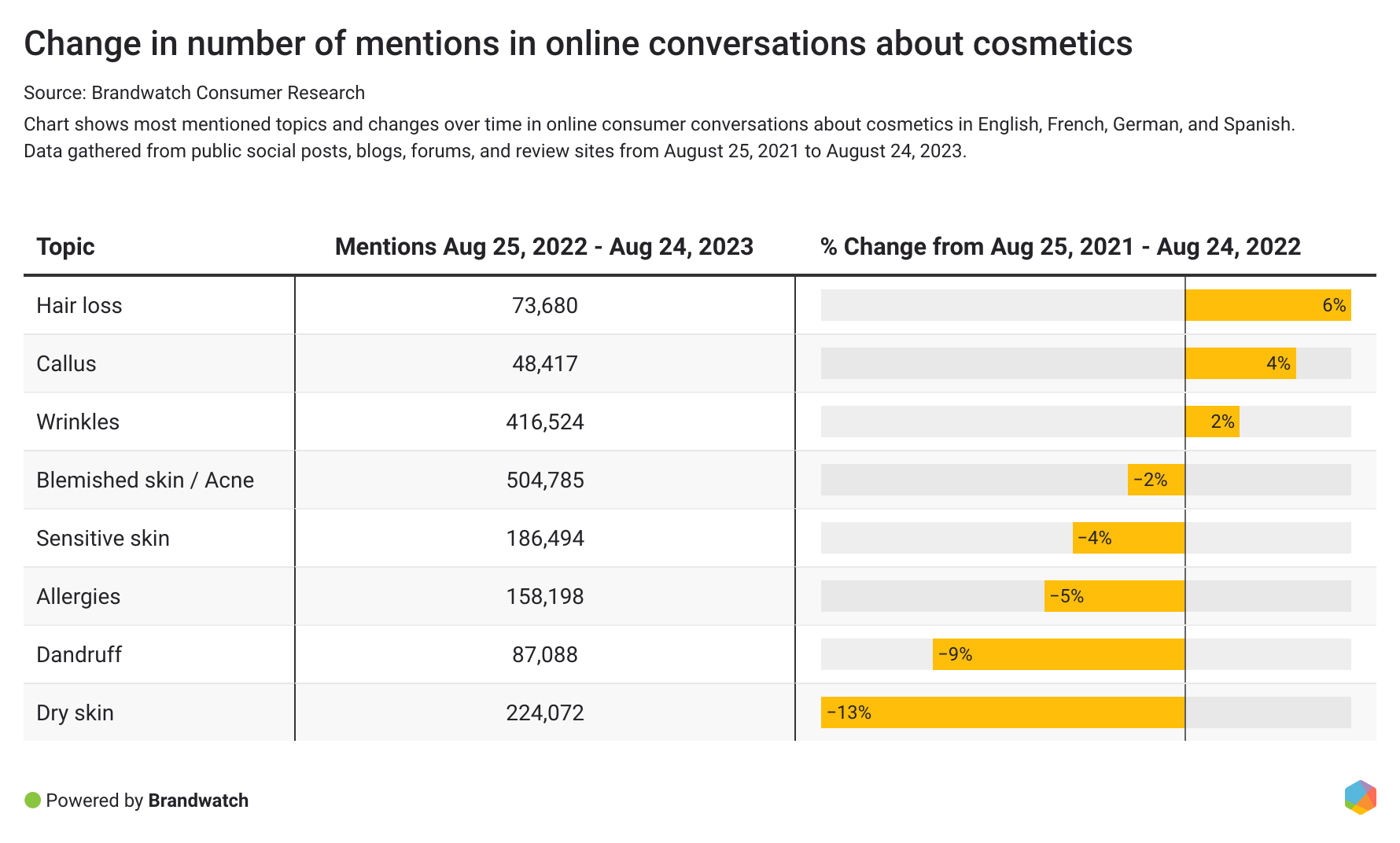Impact Of Tariffs On The Buy Canadian Beauty Industry Trend

Table of Contents
Increased Prices Due to Tariffs on Imported Ingredients
Many Canadian beauty products rely on imported ingredients – from exotic oils and unique fragrances to essential pigments – to create their formulations. Tariffs levied on these imported raw materials directly increase manufacturing costs for Canadian beauty brands. This translates to higher prices for consumers, potentially impacting the affordability and competitiveness of Buy Canadian products.
- Examples of imported ingredients: Many popular cosmetics rely on imported ingredients such as argan oil from Morocco, specific floral extracts from France, and certain mineral pigments from China. These imports face tariffs, adding to the final cost.
- Quantifiable examples: A 10% tariff on a key ingredient representing 20% of a product's cost could increase the final price by 2%. For smaller batch production, this increase can significantly affect profit margins.
- Disproportionate impact on smaller brands: Smaller, independent Canadian beauty brands are often more vulnerable to these price increases than larger corporations with greater economies of scale and negotiating power. This competitive imbalance can stifle innovation and growth within the industry.
Tariffs' Effect on the Competitiveness of Canadian Beauty Brands
Higher prices, driven by tariffs on imported ingredients, make Canadian beauty products less competitive against imported goods, especially those from countries with lower tariffs or significantly cheaper production costs. This price difference can lead to a loss of market share for Canadian brands.
- Pricing comparison: A simple comparison between a Canadian-made lipstick and a comparable international brand will often reveal a price difference directly attributable to tariffs.
- International competition: Brands from countries with favorable trade agreements or lower production costs often enjoy a significant price advantage, impacting the market share of Canadian competitors.
- Mitigation strategies: To counteract this disadvantage, Canadian beauty brands need to focus on unique selling propositions, such as emphasizing sustainability, ethical sourcing, or innovative formulations, to justify premium pricing and retain their customer base.
The Role of Government Policies and Support for the Buy Canadian Beauty Industry
Government policies play a vital role in supporting domestic beauty brands and mitigating the negative effects of tariffs. Subsidies, tax breaks, and strategic trade agreements can help level the playing field for Canadian businesses.
- Existing government support: Programs such as [mention specific Canadian government programs supporting small businesses or the manufacturing sector] offer some support, but their effectiveness in directly addressing tariff-related challenges needs further examination.
- Improved policies: Targeted initiatives that specifically address the unique challenges faced by the Canadian beauty industry, such as reducing tariffs on key imported ingredients or providing grants for research and development, could significantly boost the sector.
- Economic benefits: Investing in the Buy Canadian beauty industry fosters job creation, promotes economic growth, and strengthens the overall Canadian economy.
Consumer Behavior and the Buy Canadian Movement in the Face of Tariffs
Higher prices resulting from tariffs naturally impact consumer purchasing habits. However, the strength of the Buy Canadian sentiment remains a critical factor in determining the resilience of the trend.
- Consumer willingness to pay: Surveys and market research data are needed to quantify how much consumers are willing to pay more for Canadian-made beauty products compared to imported alternatives.
- Beyond price: Ethical sourcing, superior quality, and brand loyalty often outweigh price considerations for many consumers committed to supporting local businesses.
- Long-term impact: While higher prices due to tariffs may cause some consumers to shift to cheaper alternatives, the long-term impact on consumer support for the Buy Canadian beauty trend remains to be seen and is highly dependent on factors like the strength of brand loyalty and ongoing consumer awareness campaigns.
Conclusion: Navigating the Future of the Buy Canadian Beauty Industry Trend
The impact of tariffs on the Buy Canadian beauty industry is multifaceted. Higher prices due to tariffs on imported ingredients reduce competitiveness, affecting both smaller businesses and consumer affordability. Government policies play a crucial role in supporting the sector, while consumer behavior ultimately determines the longevity of this trend. Understanding the interplay between tariffs, pricing, and consumer preferences is vital for the future of Canadian-made beauty products. To ensure a thriving domestic beauty industry, supporting Canadian beauty brands and advocating for policies that protect and promote the growth of the sector, such as reducing the impact of tariffs on Canadian-made beauty products and supporting the Buy Canadian beauty trend, is essential. Let’s work together to shape a future where the Buy Canadian beauty industry flourishes.

Featured Posts
-
 Aston Villas Rashford Shines In Fa Cup Rout Of Preston
May 21, 2025
Aston Villas Rashford Shines In Fa Cup Rout Of Preston
May 21, 2025 -
 Trans Australia Run World Record The Race To The Finish Line
May 21, 2025
Trans Australia Run World Record The Race To The Finish Line
May 21, 2025 -
 Llm Siri Apples Challenges And Opportunities
May 21, 2025
Llm Siri Apples Challenges And Opportunities
May 21, 2025 -
 Fremantle Reports 5 6 Q1 Revenue Decline Budget Cuts Hit Entertainment Spending
May 21, 2025
Fremantle Reports 5 6 Q1 Revenue Decline Budget Cuts Hit Entertainment Spending
May 21, 2025 -
 Vanja I Sime Najbolja Kombinacija Iz Gospodina Savrsenog Nove Fotografije
May 21, 2025
Vanja I Sime Najbolja Kombinacija Iz Gospodina Savrsenog Nove Fotografije
May 21, 2025
